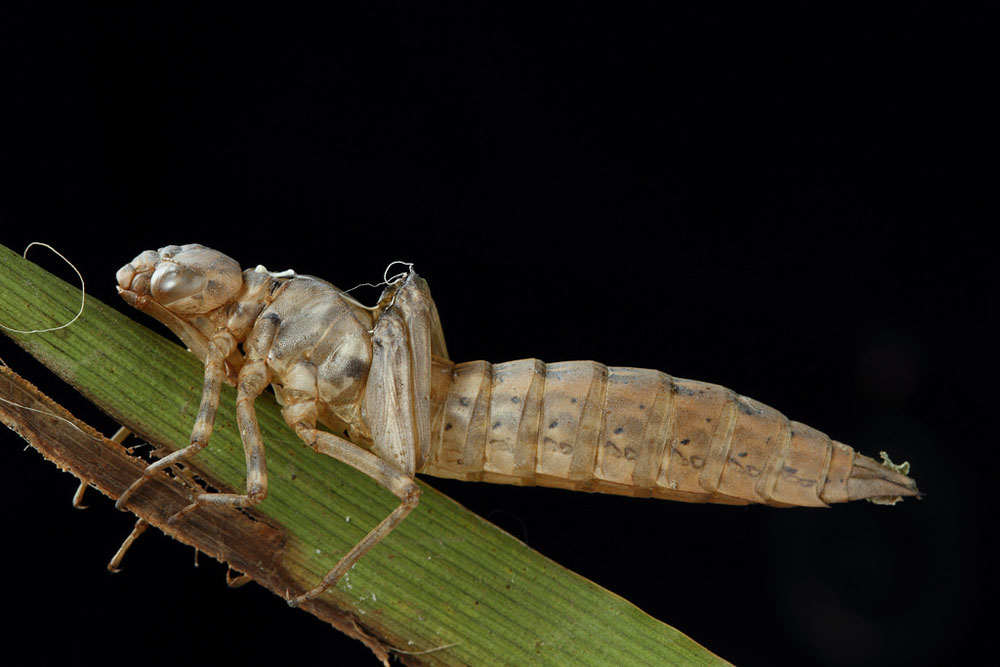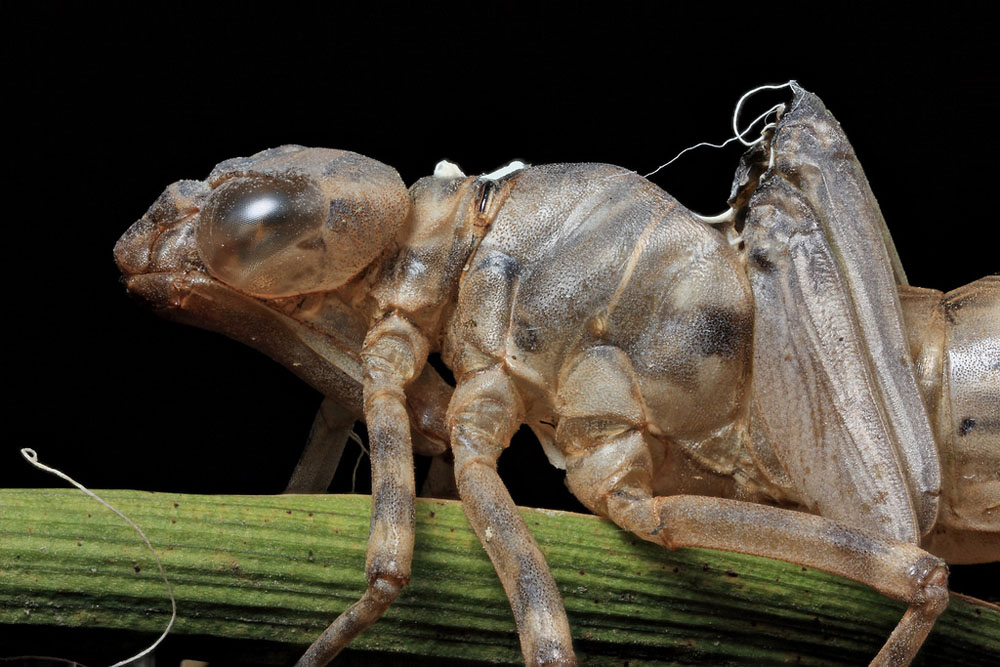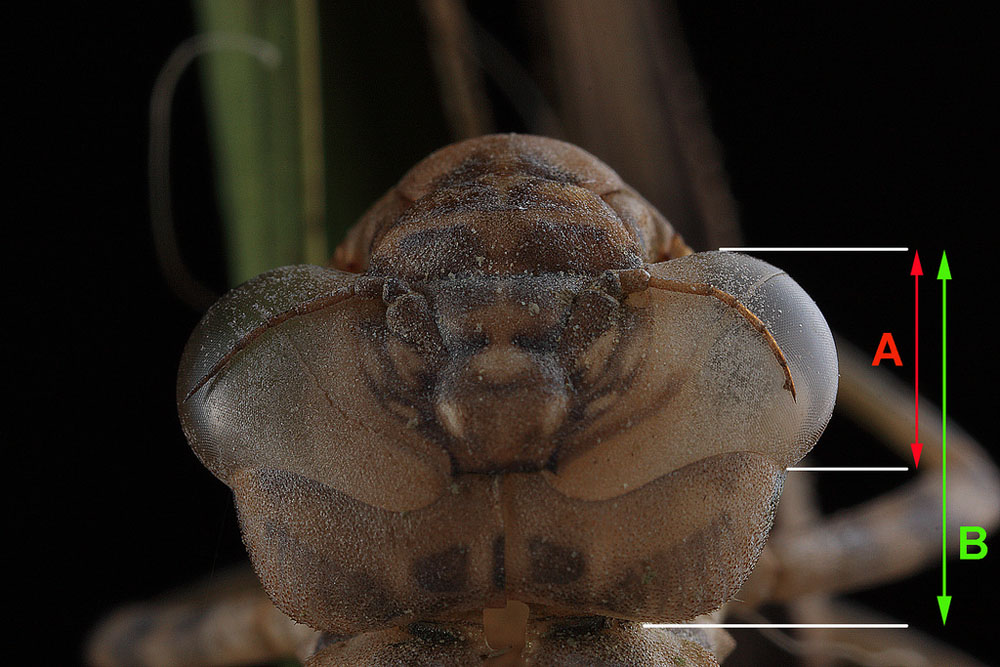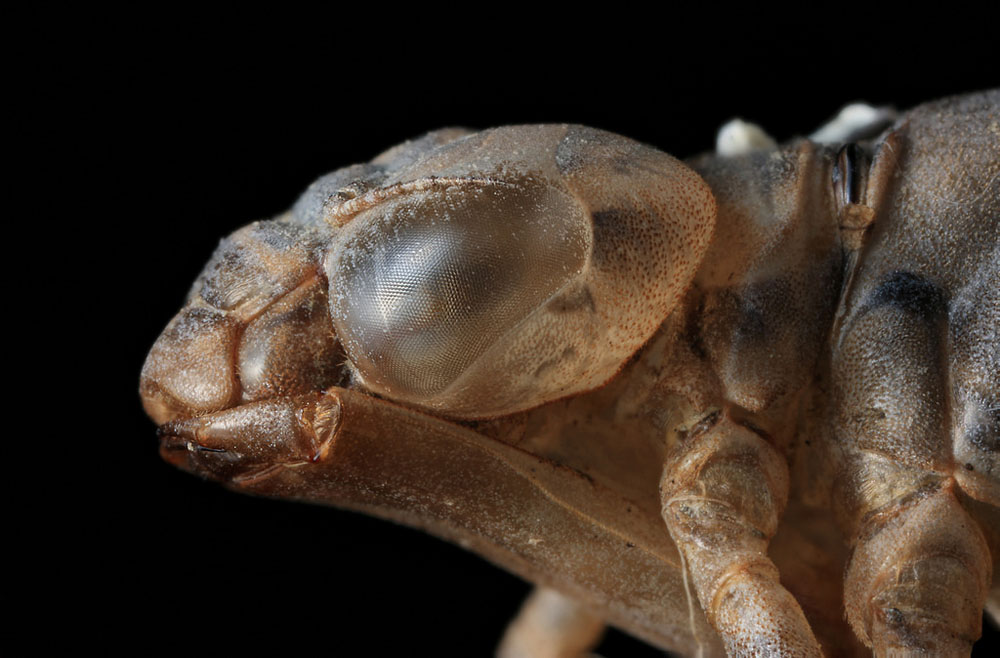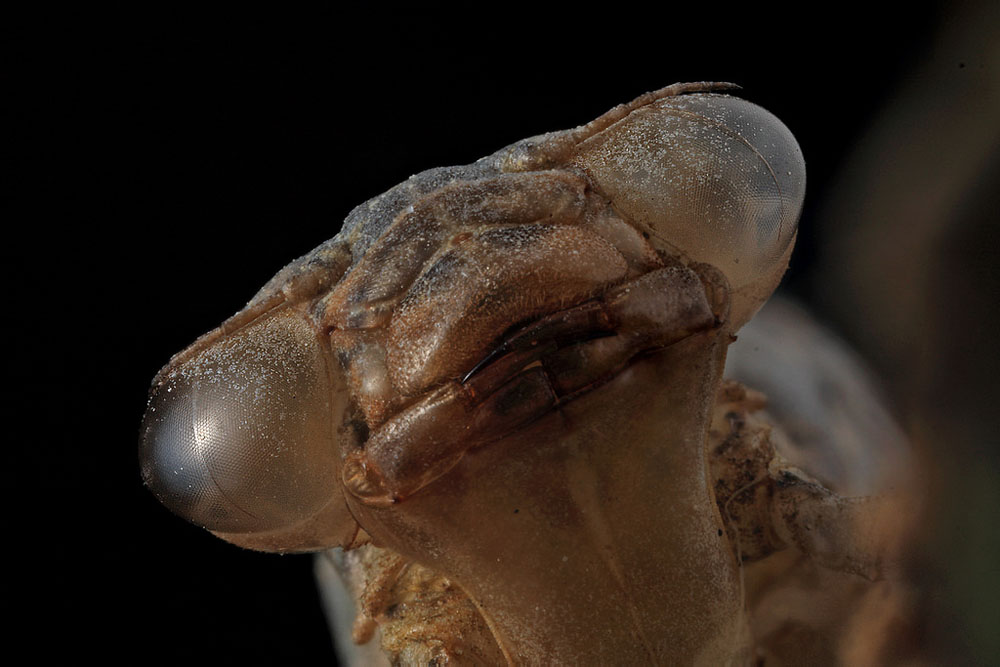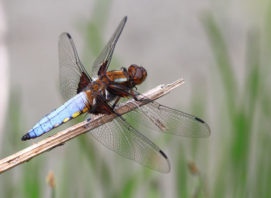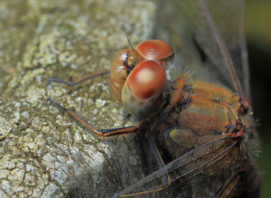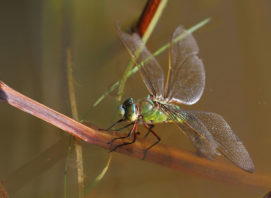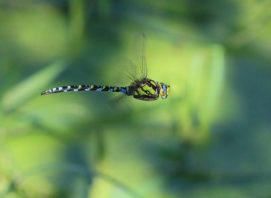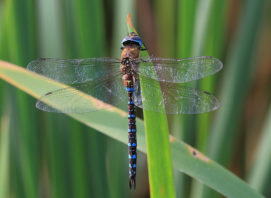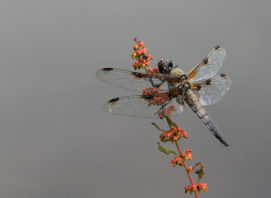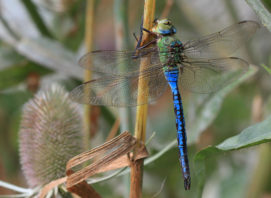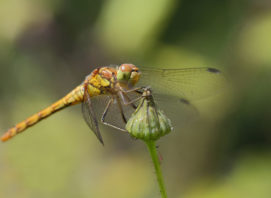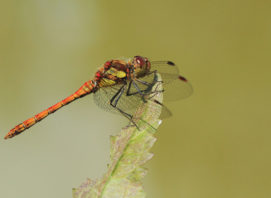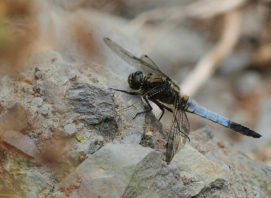Southern Hawker Exuvia
The exuvia is the exoskeleton of the dragonfly which it lived in for a number of years as a nymph in an aquatic environment. The outer casing is from the recently emerged dragonfly and the exit hole is just behind the head, the white threads are the breathing tubes.
Pic 1: I was lucky enough to find this wonderfully preserved dragonfly exuvia. I did the obligatory field-shots and then took the exuvia home to do some studio shots where I wanted to experiment with magnification and lighting. I used natural light shots as my starting point. I rather liked the dramatic lighting and the way the light fell on the top-half of the exuvia helping to give a more three-dimensional look. After the natural light shot I decided to try and bring out a bit more clarity and definition and so experimented with two diffused flashes. After having taken some flash only shots I thought that although they substantially increased sharpness they looked too flat for my liking. A third alternative was to simply augment natural light with flash and this produced an acceptable compromise.
Pic 2: MPE 65mm macro at 2x with two diffused flashes. With hindsight I can see that I should have diffused the main flash a tad more.
Pic 3: In order to help me identify the dragonfly exuvia I have taken a shot looking directly down onto the head and compared it with the excellent identification diagram in ‘Britain’s Dragonflies’ (p199) field guide by Dave Smallshire and Andy Swash. The nearest characteristics are those of the Aeshna hawkers having large eyes (A about half as long as B); head pentagonal from above with angled rear edge. Hawker larvae are also between 30mm to 40mm in length (my specimen is 40mm). They also have long torpedo shaped-bodies a flat labium with pincers at the front and 6 to 7 antennal segments – just like my specimen.
Pics 4 & 5: MPE 65mm macro at 2x with two diffused flashes. The diffusion appears better at 2x on the MPE than on the 100mm macro. This is probably due to the flash heads and lens being closer to the subject.

